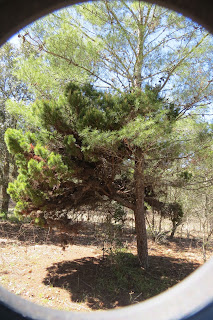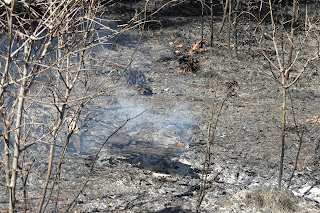March 10, 2017 Another sunny and warm day in Florida
Rosewood, Pencils and Muir
Passing by the former town of Rosewood,
Rosewood, Florida history
site of one of the most horrific racial incidents in US history, we reach Cedar Key, one of the few places developed in mid 19th century Florida.
John Muir knew about this island in the sun, so he set out from Indiana on foot, arriving in Cedar Key in October 1867 after a stroll of 1000 miles. I have copied the State historic plaque for you to read a snippet of this man's monumental contribution to North American conservation.
Typical museum piece and plaque- the fire reel above (1929), is resting at the State Park museum. The hard-to-read plaque is below. Any photo may be "right-clicked". Choose "open in new tab" in the drop down menu. You will then have a larger (and in this case, readable) version of the photo.
Cedar Key State Museum is a Florida State Park. The museum displays items (see part of very comprehensive shell collection above) collected by Saint Clair Whitman, a local resident who established the first museum in his home. The St. Clair Whitman family home is shown below.
Excellent pictorial history of Cedar Key...that is until the last few years when cats (ugh) are prominent.
The name of the island, Cedar Key, derives from a once prominent local tree, which you have seen elsewhere on this blog: the Southern Red Cedar,Juniperus silicicola, which like our Northern Red Cedar, Juniperus virginiana, isn't a cedar, but, as the Latin suggests, a Juniper. Note: many botanists do not differentiate the two junipers, listing both as "virginiana".
The Red Cedars were very prominent in the mid 19th century, when the Faber Pencil Factory harvested them for their pencils. I recall using Faber pencils back in grade school, and, indeed, they did have the characteristic juniper wood scent, though not from Cedar Key, since the supply ran out in the 19th century. You can see some nice scattered trees today.
Walking around the neighbourhood, we came across this Eagle's nest. The two young Bald Eagles, or Eaglets, were just about to fledge. The one on the right was exercising its wings. Typically, Eagles in Florida lay eggs in January. So mid-March fledging is not unusual.
Then....The Suwannee...finally, after a year of planning to get there.....
The Suwannee River runs into the Gulf of Mexico just north of Cedar Key. Thankfully, this part of the river is protected as a National Wildlife Refuge. Here is what is looks like:
We walked along the Suwannee River Trail, resplendent with March flowers, and came out upon the river.
The Butterweed, Packera glabella, above, and Horrible Thistle (it's HUGE!), Cirsium horridulum, below, are both well-named flowering plants of the Suwannee Valley.
Winston, below, enjoys (?) a Suwannee River view.
Later, we would go to the Okefenokee National Wildlife Refuge in Folkston, Georgia.












































